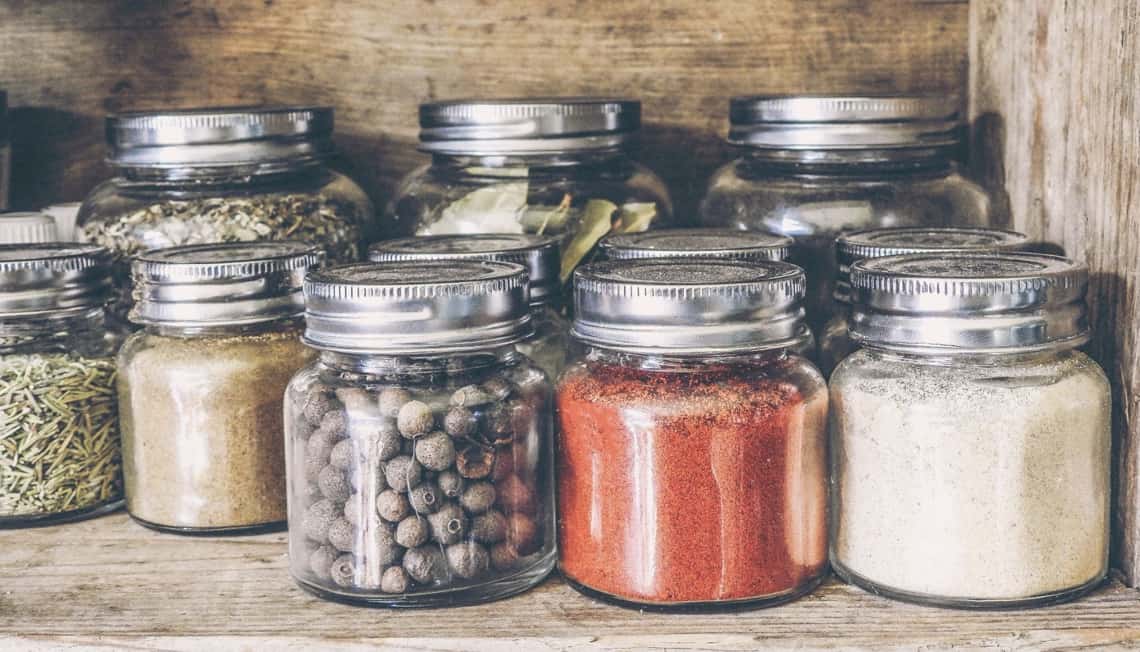Perennial herbs like lavender and chives assure you a fresh harvest year after year and will look just as attractive when mixed in a bouquet as they do in cocktails or dinner. These low-maintenance herbs thrive best in wide, outdoor planters or mixed with the rest of your garden.
Although most perennial herbs can withstand the first frost, collecting a handful of them early in the fall to hang and dry can guarantee you a steady supply throughout the winter season. From its flavorful, rustic leaves to vibrant flowers perfect for garnishing salads, this list of perennial herbs is as practical in household use as they are in the garden.
Chapter Overview
Lavender
Lavender has been gracing everybody’s gardens for centuries. Even Ancient Romans have used this aromatic herb in their baths! You may dry lavender’s purple-blue blossoms in sachets or use them in teas, shortbread, or herb butter.
Make sure you plant lavender in well-drained soil as it doesn’t prefer wet feet. When harvesting, cut lavender stems when their flowers start opening. For more information on how to maintain a lavender, you can check GardenersPath.com.
Mint
Primarily seen in Mediterranean and Middle Eastern food, mint is also great as a garnish for ice cream and lemonade. When growing them at home, you must place mint in containers if you don’t want them taking over your entire garden. To achieve a more pungent aroma, it is better if you pick mint leaves before their flowers start blooming.
Chives
Chives can thrive well in any soil, with their thistle-like flowers and long, slim leaves that appear around late spring to early summer. This herb is known for dropping its seeds, so gardeners like you can have more plants to look forward to next year. Both of its flowers and leaves are edible, perfect in dips, soups, omelets, seafood dishes, and many more!
It is best if you start snipping off some of the chives’ pieces with gardening scissors so you won’t suddenly yank the whole herb out of the soil. This herb will need regular watering from you as it prefers to thrive in a moist environment.
Rosemary
It is impossible for anyone to have never heard of rosemary. This perennial herb is often found in Italian cuisines, pairing well with rich, savory food. Most varieties of rosemary prefer to grow in well-drained and slightly acidic soil. Make sure you place this herb in areas where tilling cannot disturb them.
Oregano
There is possibly nothing that can kill oregano down. This perennial herb can still spread just as fine even when placed in poor soil. With oregano’s tiny light purple flowers, pollinators are easily drawn to it for weeks! If you prefer your oregano to have a stronger flavor, make sure to place them under the full sun while simply misting them with enough water.
Thyme
This evergreen herb has been used by humanity for centuries. Ancient Romans used thyme to season the cheese and liquor they’ve carried as they conquered the world. And the ancient Greeks have used this aromatic herb in their baths and incense. Europeans in the Middle Ages were also known to lay thyme springs under their pillows to ward off bad dreams.
Nowadays, thyme is an excellent addition to savory soups and dishes. When growing one in your home garden, it is best to start planting them in the spring, after the passing of the first frost. Make sure to place them in well-drained soil for more flavorful produce.
Sorrel
You may have never come across this herb before, but sorrel is pretty popular as a substitute for spinach, thanks to its lemony tang. Sorrels have long leaves with dark red veins on them. You can actually grow them from seed and expect some bits of greenery when spring comes.
Sage
There will always be sage mixed somewhere in your Thanksgiving dinner. This perennial herb is known for having soft, purple, or pale green leaves that have tube-like flowers, attracting hummingbirds in the area. It is best to remember that sages are exceptionally cold-hardy, so you need to snip some of its pieces when you want to have some in your dishes.
Bay Laurel
This evergreen herb is popular among stews and soups, thanks to its strong flavor. It is best to dry its leaves to encourage rich taste as this can only be produced weeks after being picked. Bay laurels are Mediterranean natives and have steeped Greek and Roman histories as a prime symbol of immense prosperity and wealth.
Lovage
This old-fashioned perennial herb is entirely edible from its leaves down to its roots. Its flavor can be likened to those of citrus and celery. Lovage’s yellow flowers start blooming in midsummer and can actually mature up to six feet tall. It has been a staple in ancient medicine, thanks to its anti-inflammatory abilities.
Takeaway
In general, perennial herbs are not that difficult to grow and maintain, even if you’re still a beginner. With the list of herbs provided above, not only can you improve the dishes you serve to your loved ones, you can also enhance the overall look of your garden.

